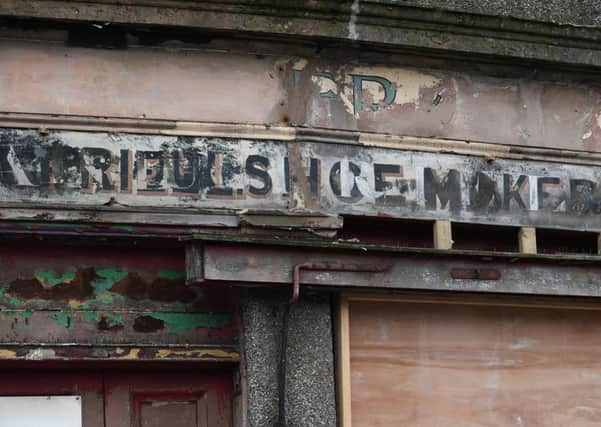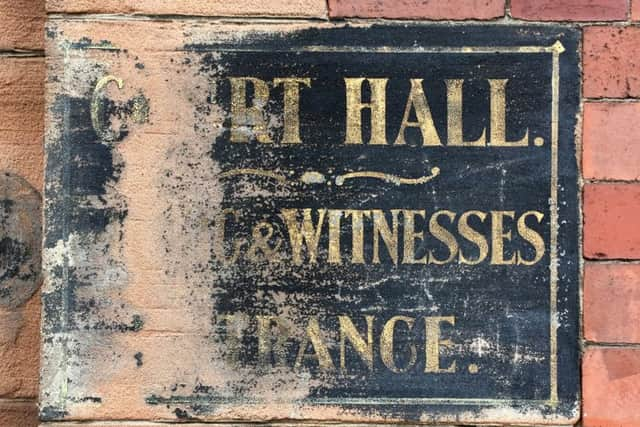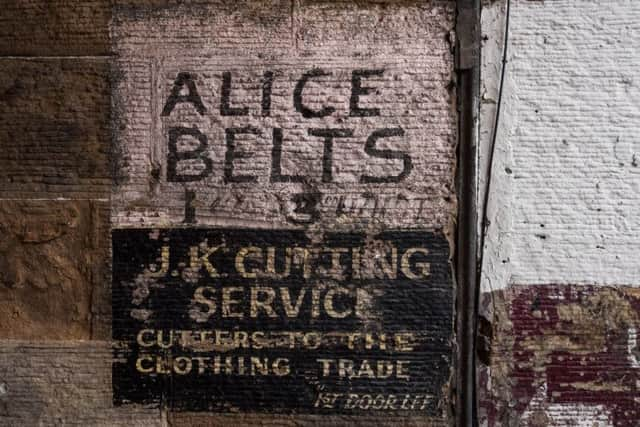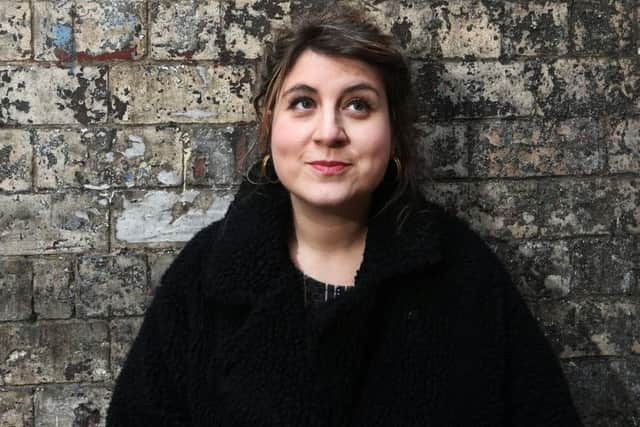Historic ‘ghost signs’ shed light on Glasgow’s past


Silvia Scopa will next week launch a project to document historic signs uncovered during building work in Scotland’s largest city – only to soon disappear again.
The Ghost Signs of Glasgow initiative aims to delve into the city’s past by researching the stories behind long-hidden shop fronts and advertising slogans.
Advertisement
Hide AdAdvertisement
Hide AdIt follows a Facebook group being launched in Edinburgh four years ago that has recorded hundreds of such signs across the capital.


Scopa, who will co-ordinate the project for the Glasgow City Heritage Trust, said: “I think they are a window to the past. Glasgow was the second city of the Empire, so there is quite a lot to reveal.”
Recently unearthed examples include a sign for the North British Hotel – now the Millennium Hotel – in George Square, which appeared during work to extend the adjacent Queen Street Station.
There is also a sign for a former tailor’s shop on Bath Street. A “Jacobean Corsetry” sign in Virginia Street is all that remains of a shop that traded between 1946 and 2000.
Scopa said: “It is possibly the most loved ghost sign in our city. It ended up giving the name to the 1817 building it is mounted on, which is now known as the Jacobean building.”


On the southside, an old butcher’s shop sign has been revealed during the transformation of a takeaway into a cafe on Nithsdale Road, Strathbungo.
Niall Murphy, the trust’s deputy director, said: “It’s about peeling back the layers of history.
“It is fascinating seeing a shop front being worked on and signage being taking off that has concealed what was once visible. It’s a kind of archaeology.”
Advertisement
Hide AdAdvertisement
Hide AdThe project will be officially launched at an event at the trust’s offices in Bell Street in the Merchant City at 6pm on Thursday, 14 March.


It will seek volunteers to photograph signs, while there are also plans for guided walks, talks and the creation of a ghost signs map.
The trust said the project would “unearth the stories behind old signs and shop fronts of the city”.
“Ghost signs – the fading remains of old painted signs on buildings – provide an invaluable insight into Glasgow’s architectural, social and cultural history,” the trust said.
“Many ghost signs hide in plain sight, hidden by the urban landscape around them, leaving a tangible part of Glasgow’s heritage vulnerable to being lost forever.”
The Edinburgh Ghost Signs Facebook, set up by Leila Kean, now has nearly 5,000 followers.
Kean said: “As so much of the city has been heritage- protected for such a long time, there’s been less of the big brand, ‘glory’ style ghost sign adverts you’ll find in the big cities around the UK and further afield.
“I’ve seen more of the type of sign that really takes you back to a point in history, whether referring to Leith’s industrial past or the fact that not that long ago there were greengrocers, poulterers, butchers, a dairy and the like on seemingly every corner.
Advertisement
Hide AdAdvertisement
Hide Ad“That’s not to mention signs of long-gone trades and industry for coal merchants, brewing, rubber mills and suchlike.
“What I’m finding is the ‘catch-them-if-you-can’ sign-hunter bug is really strong.
“When people spot refurbishments on their high street, they’re now looking out for what’s being uncovered, taking a photo with the knowledge that, nine times out of ten, the sign will be covered up again.
“So it’s a fleeting look back into the past of their neighbourhood.”
There is a big ghost sign following in other cities such as London where there are several walking tours and a mobile phone app. Websites also document ghost signs across the world, including New York, Philadelphia, Toronto and Paris.